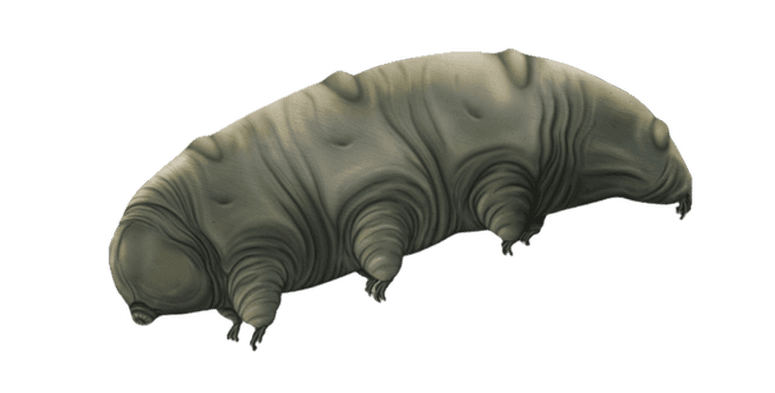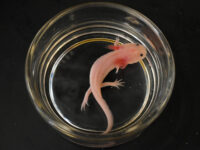Extreme temperature, extreme pressure, dehydration, starvation, air deprivation, radiation, and exposure to outer space. Microscopic, moss-inhabiting animals called tardigrades can withstand all of these conditions, making them one of the most resilient animal species on the planet. They can be found in any of Earth’s ecosystems, though most commonly live in damp environments like moss and lichens. Despite their preference for moisture, tardigrades are well-adapted enough to survive virtually anything that nature has to offer — and beyond.
It’s almost inconceivable to think about how much tardigrades have endured. These microorganisms have survived all five mass extinctions and have been on Earth for an estimated 600 million years. What aspect of their biology makes them so resilient? How is it possible that tardigrades have evolved to withstand high levels of radiation that surpass anything found in a natural environment?
Tardigrades are well-adapted enough to survive virtually anything that nature has to offer — and beyond.
To address these questions, researchers in a 2016 Nature study examined the genome sequence of Ramazzottius varieornatus, a highly stress-tolerant tardigrade species. This species is particularly well-adapted to withstand dehydrated conditions, often referred to as desiccation. In the study, geneticists sequenced the tardigrade genome and transplanted some of the tardigrades’ proteins, genes, and enzymes into mammalian cells to determine which biological mechanism creates this tolerance for extremes. One of the major findings of this experiment is the role of a protein called Dsup that is unique to tardigrades. Dsup, short for “damage suppressor,” prevents the DNA breakage that usually occurs when an organism is faced with radiation or desiccation. This protein helps protect the tardigrades from X-ray radiation, while other enzymes encoded in their genome repair damaged DNA. With the knowledge that tardigrades harbor all of these biological safeguards, it becomes much less surprising that they are such resilient animals.
One may still wonder how tardigrades evolved to synthesize proteins that protect them from radiation if they haven’t been exposed to radiation in any of their natural environments. The results of the aforementioned study involving R. varieornatus support the hypothesis that tardigrades have not adapted to unnatural conditions like radiation or the vacuum of outer space. They have primarily evolved to withstand desiccation due to their affinity for damp environments like wet moss. If these normally aqueous habitats experience long periods of dryness or a lack of precipitation, the tardigrades have historically needed to adapt to the dehydration. It is simply a beneficial side effect that the genes and proteins encoded in their genome for protection against desiccation also function to protect them from radiation and other extreme conditions.
Geneticists hope to apply the resilience and high tolerance of the tardigrade to other animal cells and utilize it to protect human DNA in extreme conditions.
Going forward, geneticists hope to apply the resilience and high tolerance of the tardigrade to other animal cells and utilize it to protect human DNA in extreme conditions. They see the potential of the tardigrade genome in several different industries. The study involving R. varieornatus found that the protein Dsup suppresses single-stranded breaks in DNA when exposed to radiation. This leads to the belief that enhancing Dsup in human cells would make them easier to preserve and better able to resist damage to DNA. Furthermore, people would be more tolerant of medical therapies involving radiation. In terms of agriculture, farmers could work in more extreme conditions and grow crops in environments that are hotter, colder, wetter, or drier than usual. There are also major implications for advances in space exploration if humans could become more adaptable to outer space.
These possibilities may seem far-fetched now, but the recent discoveries surrounding tardigrades open many doors for researchers in the future. Adaptability to extreme conditions is especially relevant as we feel the growing impact of climate change. A seemingly insignificant, microscopic creature could provide humans with the tools we need to advance even further. It would be wise to learn as much as we can from tardigrades if we hope to keep on enduring as they do.
Nature (2016). DOI: 10.1038/ncomms12808
Nature (2016). DOI: 10.1038/nature.2016.20648






